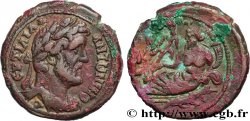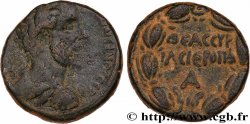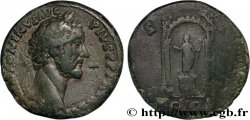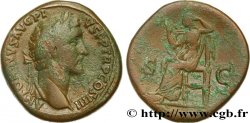brm_189471 - ANTONINUS PIUS Sesterce
Not available.
Item sold on our e-shop
Price : 175.00 €
Item sold on our e-shop
Price : 175.00 €
Type : Sesterce
Date: 159
Mint name / Town : Roma
Metal : copper
Diameter : 29,5 mm
Orientation dies : 12 h.
Weight : 24,34 g.
Rarity : R2
Coments on the condition:
Droit de frappe molle à l’usure régulière. Très beau revers avec un fronton richement décoré, servi par une agréable patine marron
Catalogue references :
Obverse
Obverse legend : ANTONINVS AVG PI-VS P P TR P XXII.
Obverse description : Tête laurée d'Antonin le Pieux à droite (O*).
Obverse translation : "Antoninus Augustus Pius Pater Patriae Tribunicia Potestas Tribunicia Potestas vicesimus secundus", (Antonin auguste pieux père de la patrie revêtu de la vingt-deuxième Puissance tribunicienne).
Reverse
Reverse legend : TEMPL. DIV A[VG REST]// COS IIII.
Reverse description : Temple à huit colonnes au centre duquel figurent les statues d'Auguste et Livie, et deux personnages sur les marches.
Reverse translation : "Templum Divi Augusti Restituit// Consul quartum", (Il restaura le temple du divin Auguste// Consul pour la quatrième fois).
Commentary
Sur cet exemplaire, le temple est particulièrement bien venu à la frappe et de nombreux détails sont visibles. Type rare, que nous proposons pour la première fois à la vente !.








 Report a mistake
Report a mistake Print the page
Print the page Share my selection
Share my selection Ask a question
Ask a question Consign / sell
Consign / sell
 Full data
Full data



